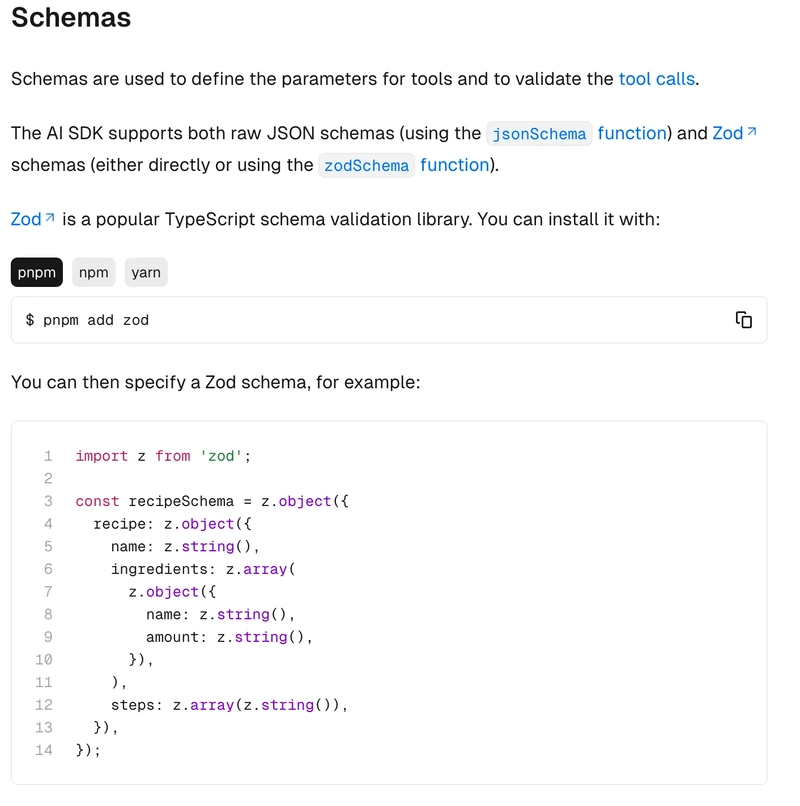Kubectl Demystified: Mastering the `kubectl config` Command
Kubernetes has become the de facto standard for container orchestration, and kubectl is the primary command-line tool for interacting with Kubernetes clusters. One of the most powerful yet often overlooked features of kubectl is the kubectl config command, which manages kubeconfig files—the configuration files that define clusters, users, and contexts. This guide will walk you through everything you need to know about kubectl config, including practical examples and tips for the Certified Kubernetes Administrator (CKA) exam. What is kubectl config? The kubectl config command allows you to manage Kubernetes configuration files (kubeconfig). These files store connection details for clusters, user credentials, and contexts (which link users to clusters and namespaces). By default, kubectl uses the file located at ~/.kube/config, but you can override this using the KUBECONFIG environment variable. Key Components of a Kubeconfig File Clusters: Define Kubernetes clusters (e.g., development, production). Users: Store authentication details (e.g., client certificates, tokens). Contexts: Link a user, cluster, and namespace together. For example, "connect to the development cluster as user John in the backend namespace." When to Use kubectl config You’ll use kubectl config in scenarios like: Switching between multiple clusters (e.g., dev vs. prod). Managing access for different users or teams. Troubleshooting authentication or connection issues. Preparing for the CKA exam, where speed and accuracy are critical. Essential kubectl config Commands with Examples 1. Viewing Configuration Command: kubectl config view Output: apiVersion: v1 clusters: - cluster: certificate-authority-data: DATA+OMITTED server: https://api.dev-cluster.example name: dev-cluster contexts: - context: cluster: dev-cluster user: john-dev name: dev-context current-context: dev-context users: - name: john-dev user: client-certificate-data: DATA+OMITTED client-key-data: DATA+OMITTED Explanation: Displays the merged kubeconfig settings. Use --minify to show only the current context. 2. Creating/Updating a Cluster Entry Command: kubectl config set-cluster prod-cluster \ --server=https://api.prod-cluster.example \ --certificate-authority=ca.crt Explanation: Adds a cluster named prod-cluster with its API server URL and CA certificate. 3. Setting User Credentials Command: kubectl config set-credentials john-prod \ --client-certificate=john.crt \ --client-key=john.key Explanation: Creates a user john-prod authenticated via client certificate. 4. Creating a Context Command: kubectl config set-context prod-context \ --cluster=prod-cluster \ --user=john-prod \ --namespace=backend Explanation: Defines a context prod-context that links the prod-cluster cluster, john-prod user, and backend namespace. 5. Switching Contexts Command: kubectl config use-context prod-context Verify: kubectl config current-context # Output: prod-context 6. Listing All Contexts Command: kubectl config get-contexts Output: CURRENT NAME CLUSTER AUTHINFO NAMESPACE * prod-context prod-cluster john-prod backend dev-context dev-cluster john-dev default 7. Deleting a Context, Cluster, or User kubectl config delete-context prod-context kubectl config delete-cluster prod-cluster kubectl config delete-user john-prod 8. Merging Multiple Kubeconfig Files Set the KUBECONFIG environment variable to merge files: export KUBECONFIG=~/.kube/config:~/another-config kubectl config view --merge # View combined config CKA Exam Tips Speed Matters: Use kubectl config use-context to quickly switch contexts in exam questions. Contexts and Namespaces: Many exam tasks require working in specific namespaces. Set them in contexts to avoid typing --namespace repeatedly. Backup Config: Before making changes, backup your kubeconfig: cp ~/.kube/config ~/.kube/config.backup Troubleshooting: If a cluster connection fails, verify server URLs and certificates with kubectl config view. Example Scenario: Managing Two Clusters Task: Switch between a development cluster and a production cluster. Add the production cluster: kubectl config set-cluster prod --server=https://prod.example --certificate-authority=prod-ca.crt Add production user credentials: kubectl config set-credentials prod-admin --token=PROD_TOKEN Create a context: kubectl config set-context prod-admin@prod --cluster=prod --user=prod-admin Switch to the production context: kubectl config use-context prod-admin@prod Conclusion Mastering kubectl config is essential for efficiently managing Kubernetes clusters, especially in multi

Kubernetes has become the de facto standard for container orchestration, and kubectl is the primary command-line tool for interacting with Kubernetes clusters. One of the most powerful yet often overlooked features of kubectl is the kubectl config command, which manages kubeconfig files—the configuration files that define clusters, users, and contexts. This guide will walk you through everything you need to know about kubectl config, including practical examples and tips for the Certified Kubernetes Administrator (CKA) exam.
What is kubectl config?
The kubectl config command allows you to manage Kubernetes configuration files (kubeconfig). These files store connection details for clusters, user credentials, and contexts (which link users to clusters and namespaces). By default, kubectl uses the file located at ~/.kube/config, but you can override this using the KUBECONFIG environment variable.
Key Components of a Kubeconfig File
- Clusters: Define Kubernetes clusters (e.g., development, production).
- Users: Store authentication details (e.g., client certificates, tokens).
-
Contexts: Link a user, cluster, and namespace together. For example, "connect to the development cluster as user John in the
backendnamespace."
When to Use kubectl config
You’ll use kubectl config in scenarios like:
- Switching between multiple clusters (e.g., dev vs. prod).
- Managing access for different users or teams.
- Troubleshooting authentication or connection issues.
- Preparing for the CKA exam, where speed and accuracy are critical.
Essential kubectl config Commands with Examples
1. Viewing Configuration
Command:
kubectl config view
Output:
apiVersion: v1
clusters:
- cluster:
certificate-authority-data: DATA+OMITTED
server: https://api.dev-cluster.example
name: dev-cluster
contexts:
- context:
cluster: dev-cluster
user: john-dev
name: dev-context
current-context: dev-context
users:
- name: john-dev
user:
client-certificate-data: DATA+OMITTED
client-key-data: DATA+OMITTED
Explanation:
Displays the merged kubeconfig settings. Use --minify to show only the current context.
2. Creating/Updating a Cluster Entry
Command:
kubectl config set-cluster prod-cluster \
--server=https://api.prod-cluster.example \
--certificate-authority=ca.crt
Explanation:
Adds a cluster named prod-cluster with its API server URL and CA certificate.
3. Setting User Credentials
Command:
kubectl config set-credentials john-prod \
--client-certificate=john.crt \
--client-key=john.key
Explanation:
Creates a user john-prod authenticated via client certificate.
4. Creating a Context
Command:
kubectl config set-context prod-context \
--cluster=prod-cluster \
--user=john-prod \
--namespace=backend
Explanation:
Defines a context prod-context that links the prod-cluster cluster, john-prod user, and backend namespace.
5. Switching Contexts
Command:
kubectl config use-context prod-context
Verify:
kubectl config current-context # Output: prod-context
6. Listing All Contexts
Command:
kubectl config get-contexts
Output:
CURRENT NAME CLUSTER AUTHINFO NAMESPACE
* prod-context prod-cluster john-prod backend
dev-context dev-cluster john-dev default
7. Deleting a Context, Cluster, or User
kubectl config delete-context prod-context
kubectl config delete-cluster prod-cluster
kubectl config delete-user john-prod
8. Merging Multiple Kubeconfig Files
Set the KUBECONFIG environment variable to merge files:
export KUBECONFIG=~/.kube/config:~/another-config
kubectl config view --merge # View combined config
CKA Exam Tips
-
Speed Matters: Use
kubectl config use-contextto quickly switch contexts in exam questions. -
Contexts and Namespaces: Many exam tasks require working in specific namespaces. Set them in contexts to avoid typing
--namespacerepeatedly. - Backup Config: Before making changes, backup your kubeconfig:
cp ~/.kube/config ~/.kube/config.backup
-
Troubleshooting: If a cluster connection fails, verify server URLs and certificates with
kubectl config view.
Example Scenario: Managing Two Clusters
Task: Switch between a development cluster and a production cluster.
- Add the production cluster:
kubectl config set-cluster prod --server=https://prod.example --certificate-authority=prod-ca.crt
- Add production user credentials:
kubectl config set-credentials prod-admin --token=PROD_TOKEN
- Create a context:
kubectl config set-context prod-admin@prod --cluster=prod --user=prod-admin
- Switch to the production context:
kubectl config use-context prod-admin@prod
Conclusion
Mastering kubectl config is essential for efficiently managing Kubernetes clusters, especially in multi-environment setups. For CKA aspirants, practicing these commands ensures you can swiftly navigate exam tasks. Remember to:
- Use
kubectl config viewto inspect settings. - Leverage contexts to reduce repetitive flags.
- Backup your kubeconfig before making changes.
With these skills, you’ll confidently manage clusters and ace Kubernetes-related challenges!








































































































































































![[The AI Show Episode 143]: ChatGPT Revenue Surge, New AGI Timelines, Amazon’s AI Agent, Claude for Education, Model Context Protocol & LLMs Pass the Turing Test](https://www.marketingaiinstitute.com/hubfs/ep%20143%20cover.png)

































































































































![From drop-out to software architect with Jason Lengstorf [Podcast #167]](https://cdn.hashnode.com/res/hashnode/image/upload/v1743796461357/f3d19cd7-e6f5-4d7c-8bfc-eb974bc8da68.png?#)








































































































.jpg?#)































_ArtemisDiana_Alamy.jpg?#)


 (1).webp?#)






































































-xl.jpg)














![Yes, the Gemini icon is now bigger and brighter on Android [U]](https://i0.wp.com/9to5google.com/wp-content/uploads/sites/4/2025/02/Gemini-on-Galaxy-S25.jpg?resize=1200%2C628&quality=82&strip=all&ssl=1)









![Apple Rushes Five Planes of iPhones to US Ahead of New Tariffs [Report]](https://www.iclarified.com/images/news/96967/96967/96967-640.jpg)
![Apple Vision Pro 2 Allegedly in Production Ahead of 2025 Launch [Rumor]](https://www.iclarified.com/images/news/96965/96965/96965-640.jpg)




































































































































